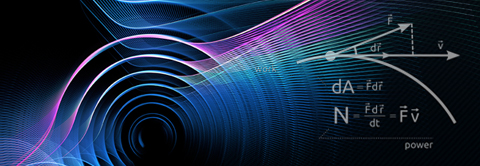Non-equilibrium many-body spin dynamics in diamond
2016.11.17 15:14
| 날짜 | 2016-11-18 10:30 |
|---|---|
| 일시 | Nov. 18th (Fri) 10:30 a.m. |
| 장소 | #5318(5th fl.) |
| 연사 | Dr. 최 순 원, Havard University |
Non-equilibrium many-body spin dynamics in diamond
Dr. 최 순 원, Havard University
Nov. 18th (Fri) 10:30 a.m., #5318(5th fl.)
Abstract:
In this talk, we will discuss two recent developments in non-equilibrium quantum dynamics of strongly interacting many-body systems: I. critically slow thermalization in a disordered dipolar spin ensemble [1] and II. the observation of discrete time crystalline order [2]. Both of these experiments were enabled by a high density ensemble of nitrogen-vacancy (NV) color centers in diamond [3]. As a mixture of theory and experiments, the talk will be self-contained and pedagogical, reviewing some of basic concepts in many-body localization, Floquet time-crystal, spin properties of NV centers and experimental techniques to manipulate and engineer the dynamics.
Part I:
Statistical mechanics underlies our understanding of macroscopic quantum systems. It is based on the assumption that out-of-equilibrium systems rapidly approach their equilibrium states, forgetting any information about their microscopic initial conditions. This fundamental paradigm is challenged by disordered systems, in which a slowdown or even absence of thermalization is expected. By controlling the spin states of the ~10^6 NV centers, we observe slow, sub-exponential thermalization consistent with power laws that exhibit disorder-dependent exponents; this behavior is modified at late times owing to many-body interactions. These observations are quantitatively explained by a resonance counting theory that incorporates the effects of both disorder and interactions
Part II:
The interplay of periodic driving, disorder, and strong interactions has recently been predicted to result in exotic ``time-crystalline'' phases, which spontaneously break the discrete time-translation symmetry of the underlying drive. We report the experimental observation of such discrete time-crystalline order and the observation of long-lived temporal correlations at integer multiples of the fundamental driving period. We experimentally identify the phase boundary and find that the temporal order is protected by strong interactions; this order is remarkably stable against perturbations, even in the presence of slow thermalization. We provide a theoretical description of approximate Floquet eigenstates of the system based on product state ansatz and predict the phase boundary, which is in qualitative agreement with our observations.
[1] G. Kucsko et al, arXiv:1609.08216
[2] S. Choi et al, arXiv:1610.08057
[3] J. Choi et al, arXiv:1608.05471
Contact: Eun-Gook Moon, Physics Dept., (egmoon@kaist.ac.kr)







